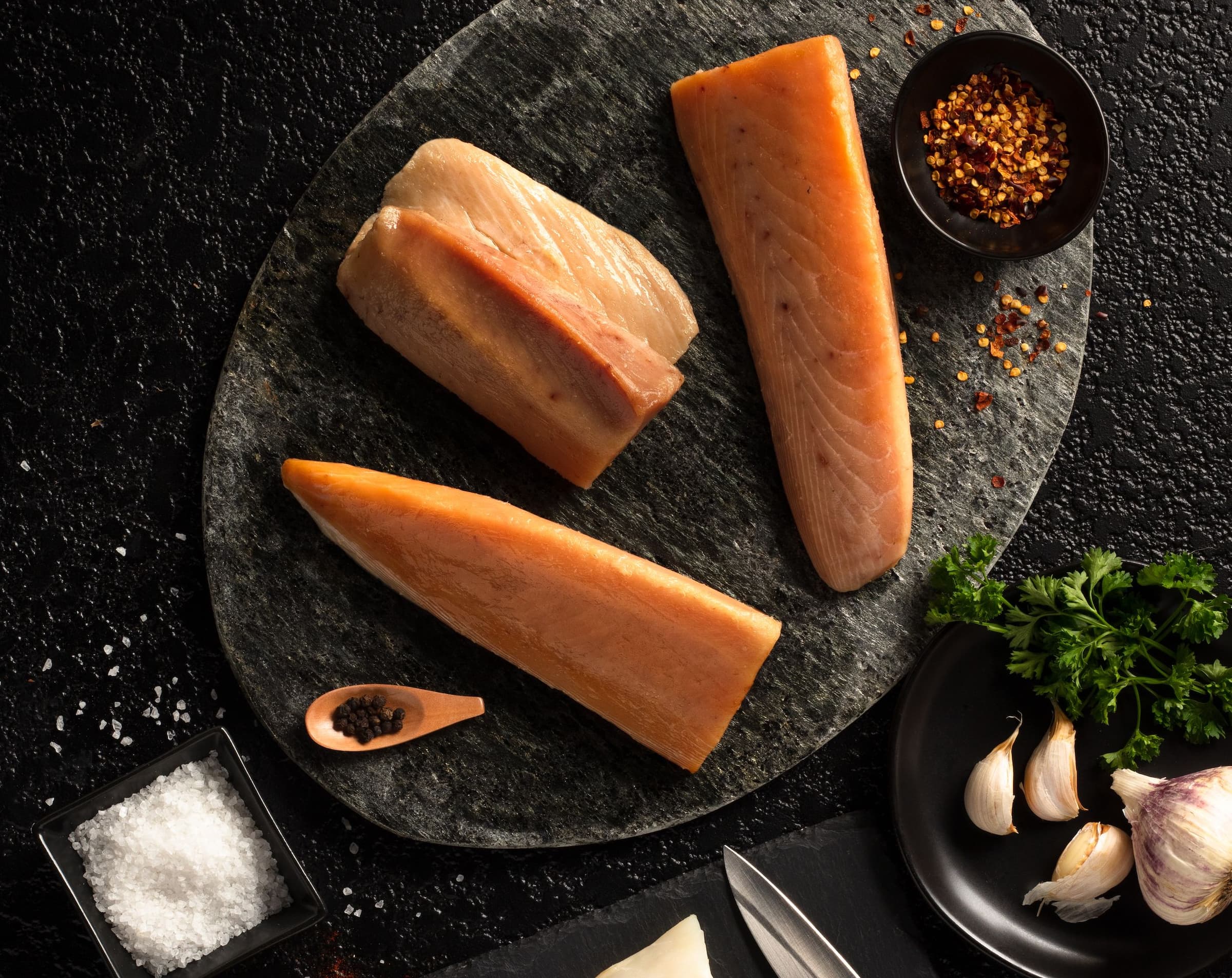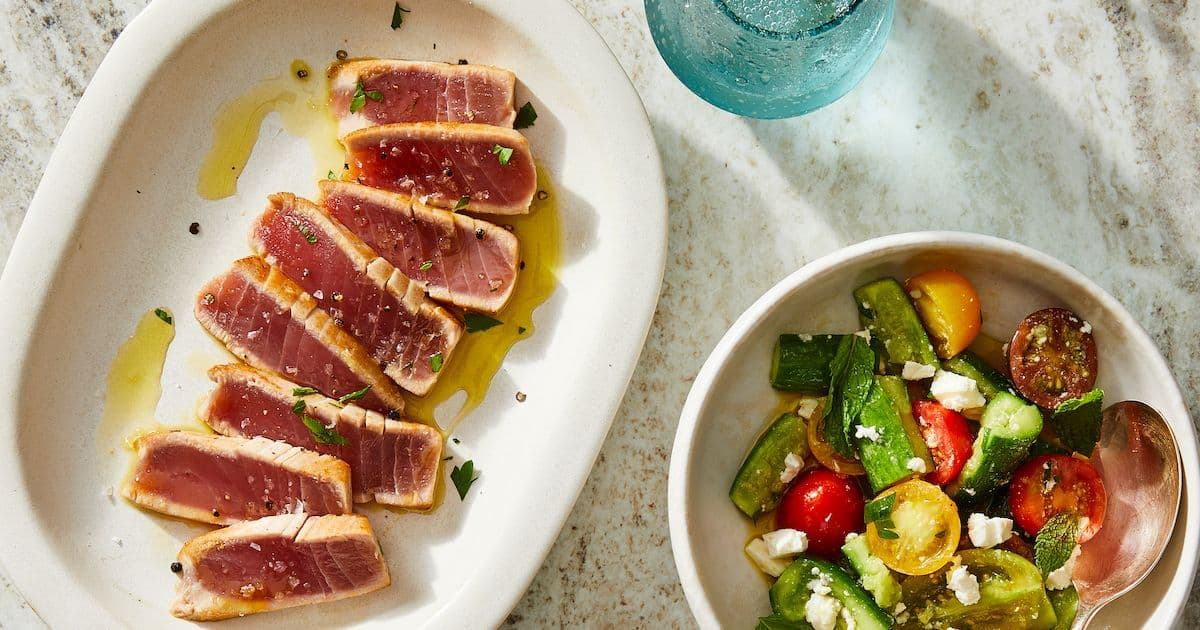5 Tips When Buying Tuna
Whether you’re searing tuna for an orange-fennel salad or making a tuna poke rice bowl, you want to feel secure in knowing you’re eating healthy and responsible seafood.
While there are a few serious issues that seafood consumers should be aware to avoid, responsible tuna fisheries do exist. I've been learning about this fishery for the last year or so and have put together a list of some of my findings about responsible tuna. Namely, what "responsible" means and what to look for in your grocery aisle.
No surprises here, supporting seafood that's transparent and traceable to small-boat fishermen is key.
1. Avoid tuna that was caught with human rights abuses. Look for tuna that is traceable to a trusted fishery.
Serious crimes such as debt bondage, piracy, and illegal, unreported, and unregulated (IUU) fishing swirl around the tuna industry in notoriously difficult-to-regulate high seas. Here, industrial-scale boats catch tuna in international waters (defined as over 200 miles from shore) where this highly migratory species is often found, but where regulations are very difficult to enforce.
Unfortunately, these IUU fish stock our grocery stores at low prices due to cheap labor which comes in the way of migrant, undocumented, trafficked, or forced labor. We highly encourage you to listen directly to the people who are reporting and working on solutions to these issues.
The best way to avoid the risk of supporting unethical and illegally-caught tuna is to know the source of your seafood. Look for tuna that is traceable to a responsibly-managed fishery in the United States.
2. Avoid tuna that was caught using industrial-scale gear types and FADs (Fish Aggregating Devices). Look for tuna that’s traceable to small-scale fishermen instead.
We interviewed leading sustainability sourcing advisor Carrie Brownstein to discuss what she looks for in sourcing sustainable tuna. Brownstein recommends that when you’re in the grocery aisle, a good rule of thumb is to look for pole-and-line-caught tuna.
Pole-and-line fisheries catch each fish one at a time which reduces the risk of overfishing and significantly reduces bycatch (unintended catch) of marine life such as sharks, sea turtles, and juvenile fish. FADs are an attracting device that can negatively impact these species.
What’s more, Brownstein shares that there are very significant social benefits to buying from pole-and-line tuna fisheries. In fact, per one ton of tuna caught, 44 people are employed by pole-and-line fisheries to every one person employed in industrial fisheries.

Plus, pole-and-line-caught fish, such as Sitka Seafood Market’s troll-caught albacore, tend to be smaller, which reduces the risk of mercury accumulation found in larger, non-hook-and-line-caught fish.
Another way to know you’re supporting responsible seafood producers is to look for tuna that is traceable to small-boat fishermen. For example, our yellowfin tuna was caught with small-scale longline gear by small-boat fishermen aboard the F/V Eagle Eye II in the highly regulated fishery on the northeastern seaboard of the United States. This fishery is closely managed for sustainability and every fishing trip either has a scientific observer physically onboard or electronically monitoring the catch to ensure every fish is accounted for in the data.
3. Look for blast-frozen tuna sold as loins.
Only the very best and most premium tuna that is handled and frozen with care is sold as a loin. If a boat doesn’t bleed its fish or if it doesn’t have the ultra-cold refrigeration to keep its fish super chilled, that fish winds up being canned. According to a U.S. seafood processor executive, 75% of all the tuna caught on the West Coast is canned, while only the most premium 25% is sold as sushi-grade loins.
It may come as a surprise, but the seafood counter may not be the best place to find the freshest seafood money can buy — even if the fish is labeled “fresh.” It turns out that blast-frozen fish, such as tuna that are frozen at sea, exhibit less damage at the cellular level than their “fresh” counterparts.

4. Avoid treatments that disguise the freshness of your tuna. Look for natural, untreated portions instead.
Some tuna loins found in the store are treated with carbon monoxide to give them an appealing, yet fake, red color. Tuna’s natural red color disappears within hours when exposed to oxygen — turning a brown or tannish color. While this process doesn’t affect the taste or quality of the loin, it does tend to surprise or even be off-putting to consumers. That’s why many of the tuna loins sold in the United States, especially yellowfin tuna loins, are treated with carbon monoxide to maintain an (unnatural) bright red coloring that customers have come to expect.
The downside is that studies show that this unnatural coloring process masks spoilage. Experts emphasize that while this process preserves color, it doesn’t do anything to preserve the fish’s quality. The result is decreased transparency with the consumer who could be eating something far past its prime. To ensure that you’re receiving natural, untreated tuna, be sure you know and trust the source of your seafood.

5. Look to trusted sources and experts for information.
Part of living in a complex, interconnected world is recognizing that we can’t all be experts on everything. Simply becoming an expert on each ingredient on your dinner plate would take more than one lifetime. That’s why we lean on one another with systems of science-based, peer-reviewed evidence and look to experts to decipher what that data means.
When Sitka Seafood Market determines if tuna meets their strict sourcing standards (which go beyond sustainability certifications and tools) they look at several factors — primarily quality handling, fishery and ecological health, and ethical processing.
The Take Away
You don’t need to be a fish expert to eat responsibly harvested and processed fish — you just need your seafood source to be staffed by them. That’s why we have experts on our team who closely monitor fisheries across species, fishery locations, and gear types to assess sustainability and responsibility. We work closely with a third-generation family-owned and run processor that we trust to uphold the best possible quality specs while paying and treating their employees fairly so you can confidently enjoy tuna that is sustainable, ethical, and supports small-boat fishermen who live and work in coastal communities right here in the United States.



